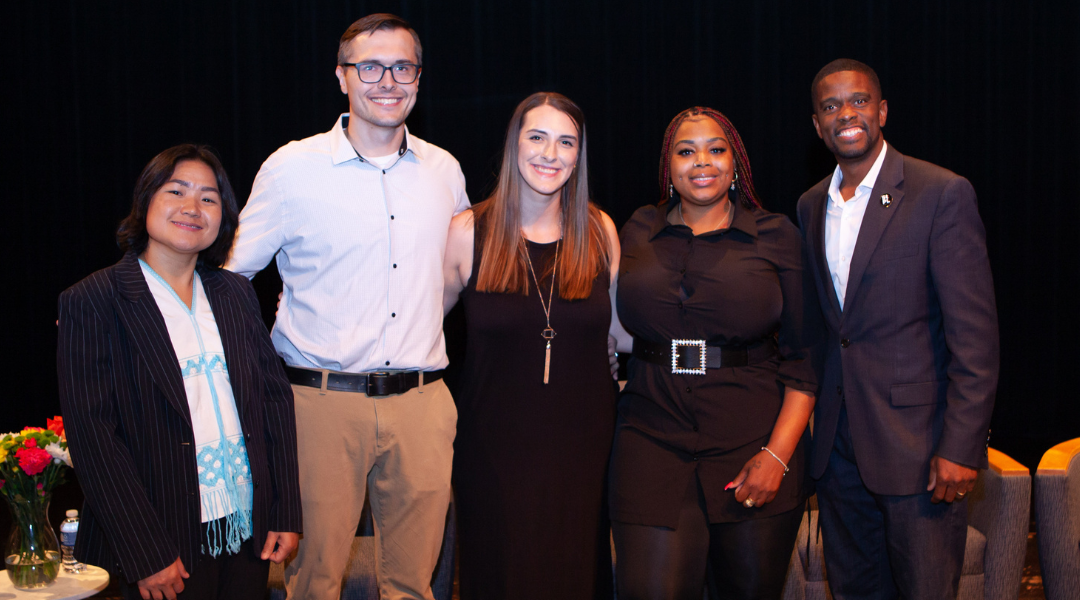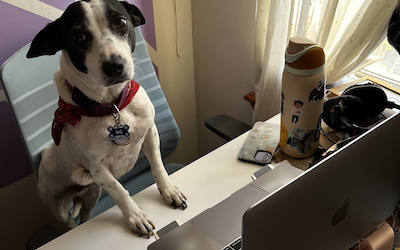
Intergenerational pairs complete activities together at the symposium and a workshop
Brenda Jimenez is the CEO of MENTOR New York, an affiliate of MENTOR, and her project is one of 10 awardees of the CoGen Challenge to Advance Economic Opportunity. Watch for interviews with all 10 of these innovators bringing older and younger people together to open doors to economic opportunity for all.
What is the Intergenerational Career Pathways Symposium?
MENTOR New York creates and supports mentoring programs wherever young people live, learn and play. This project brings high schoolers and older adults together to strengthen their financial literacy and economic freedom.
Why is cogeneration important to your work?
We’re trying to bridge generational and economic divides. Money is the mechanism we’re using to spark both deeply personal and universal conversations.
I think all young people — across race and class — are feeling socially isolated and lonely. They need a way to connect more deeply with adults outside their family who can help them solve problems and build networks. When you live in a lower-income community, you need relationships with people who are not just willing to have a conversation but who will take action on your behalf. That’s what helps you build social capital.
What problem are you trying to solve?
We want to increase the number of mentors in the community – adults who are curious learners and will show up for young people. We also want young people to know how to ask for help and understand how to get it. To have people they can go to, who will feel safe and help them look at the problem from a different perspective and identify potential solutions.
People in their 30s to their 50s aren’t as available for mentoring roles as they used to be. Covid took a toll on them, and many are caring for both their children and parents while working full time. We’re looking to see what happens when you connect older generations, those 65+ who have more free time, and high schoolers with their entire life ahead of them.
How does the program work?
We partnered with two senior community centers in Queens, New York — the most diverse borough in the state. Each site (Sunnyside Community Services and Riis Neighborhood Settlement) brought 15 matches together for two 2-hour workshops, where we did a lot of activities to get them connecting deeply right away. What do they wish they could do, if they didn’t have financial constraints? What are their values? Where do their values align?
Then we had a full-day symposium where all 30 pairs came together. There was a mixture of speakers and activities and in the afternoon they were given a challenge: create a business plan, figure out how you want to invest an amount of money, save up for something as a pair based on what you’ve dreamed of, make some plans and commitments.
We ended up facilitating everything in both English and Spanish because the majority of seniors are bilingual but felt more comfortable with Spanish.
How do youngers and olders solve problems together?
Each generation brings unique experiences and perspectives. The exercises allow everyone to listen and get a sense of where they’re at first. This helps them avoid making assumptions about each other or giving advice that’s not useful.
Most of the intergenerational pairs shared similar values. They spent time together exploring ways they would save money, invest and consider a financial future they may have not considered. At the end of the session, an older woman shared that if she had this experience 50 years ago, she is certain her life would be different today. One of the teenagers said he enjoyed meeting someone who helped change his perspectives about money, life and aging.
Have you encountered any unexpected positive or negative outcomes in bringing your project to life?
I’ve been surprised by how quickly the affection and care for one another happened. At the end of our first two-hour session, I can’t tell you how many pairs hugged and said they couldn’t wait to see each other at the next session. I almost cried because it was so moving to see that depth of connection happen so much faster than I had anticipated. When I talked to my colleagues who ran the other workshop, they said the same thing happened there.
At the symposium, there was a moment after lunch when a few of the young people put on some music and a group of older people stood up and started dancing – pulling many of the younger people into their spontaneous dance party! The joy was infectious.
What would be your advice to someone who is looking to cogenerate?
Be very clear up front that you are asking participants to come build relationships with a young person or a senior. Make sure that the first engagement is fun and aimed at getting them in relationship quickly through an activity. Don’t talk too much. And don’t make it formal but have goals for each activity.
What song keeps you motivated?
There are two: This Girl’s on Fire by Alicia Keys and Run the World (Girls) by Beyonce. When I’m going to facilitate a workshop, I’ll listen to one of those. It helps me get in the right mindset because you can’t show up to this work without the confidence that you’re going to make a difference, even if you’re doubting yourself walking into it.





